Wildcraft: A Practiced Eye
I wanted to do a series of posts on Wildcrafting, foraging, whatever you want to call it: the art of finding wild edibles and how to safely consume them without harming yourself or the environment. The presentation I gave on it at LTUE was very well received - they were turning people away at the door - and I wanted to start there.
The first thing I told the audience was that I obviously hadn't thought this through. I'd agreed to present on wild edible foods in Utah, a place I had only visited once before, and had never foraged in. And I was doing it in February, the dead of winter. There isn't going to be a lot to forage in high desert at any time, but especially not then! So I presented to them more of a 'how to find more on your area' before delving into the hypothetical of 'lost on a distant planet and must find foods.'
And then, on the third day of the con, after my presentation, I was able to get out and hike. Nearly a mile above sea level, in a nominal desert, in winter, below freezing temperatures, significant snow on the ground, less than an hour of time spent on the hike... and I was able to identify several eminently edible species. I'd imagine there were more I missed, given my constraints. And I stand by what I told the class - in a true survival situation, all bets are off, and hunting or fishing remains the best way to get enough calories.
However, that's not what this post is about. It's about training your eyes to do what I did on that hike. Practice could make all the difference, if you really did get dropped on that deserted planet, or island, or lost while deer hunting. There's a tragic story of a woman who wandered off the Appalachian Trail in Maine, broke her ankle, and died several days or weeks later within a few hundred yards of the trail. Above and beyond the fun challenge of finding edible wild things everywhere you go, if you are outdoors at all, this is a skill you really might need someday. Ideally, the beginning of learning is to spend some time with a knowledgeable person in your area, but that's not always practical - nor is it enough. Adding field guides, and spending time honing your skills on your own, teaching yourself to recognize leaf shapes, common edible plants, and even understanding plant genera to better help you calculate 'is this safe to eat?' are all good tools to add to your repertoire.
So the quick species I found in the mountains above Provo were: Maple (Acer), Oak (Quercus), Sage (Artemisia), Juniper (Juniperus or Thuja), and Rose (Rosa). Of these, two are marginally edible (there is serious debate about sagebrush being edible. Given it's in the same family as Absinthe of the infamous Green Fairy, I'd strongly caution against consuming much of it if any). Three are positively delicious, prepared correctly, and one of those can be lifesaving if you really did have to subsist on a mainly-meat diet such as a winter high in the desert would demand.
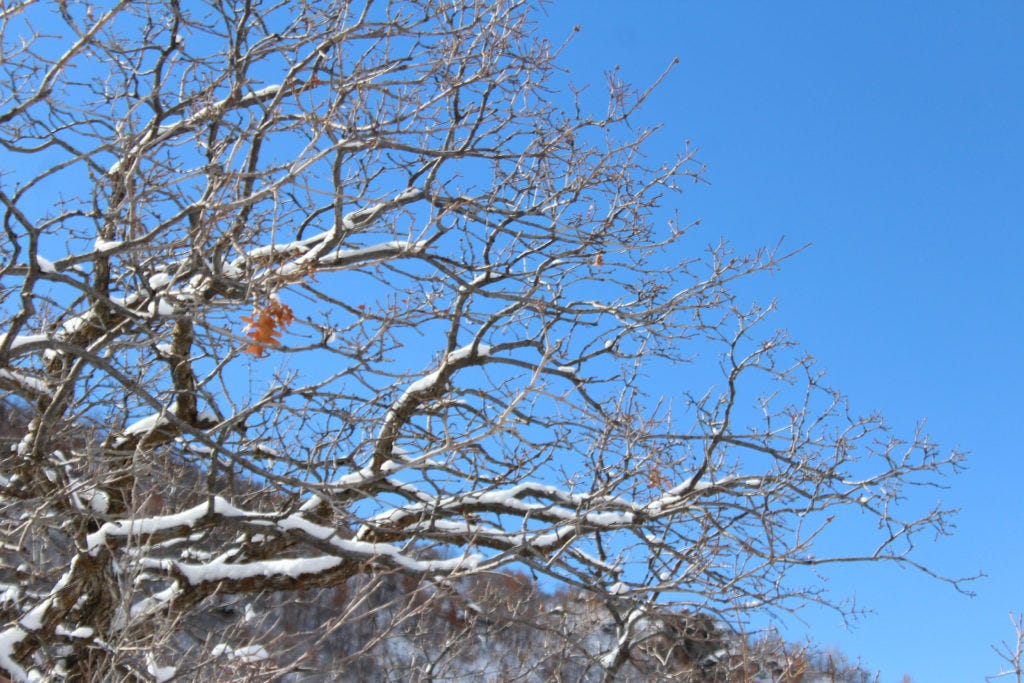
Look closely. See those leaves still clinging? Those rounded lobes tell me this is a white oak.
Quercus, or oak, species, almost all have edible nuts. The differences are that Red Oaks, which have pointed leaf lobes, are full of tannins that are too bitter to eat. Red Oak acorns must be boiled, with several water changes, before they can be eaten, either as is, or roasted and ground into flour. White Oak acorns contain far less tannins and can often be eaten out of hand, or roasted, or ground into flour following the roasting. Nuts are high in essential nutrients like fat - in survival situations, fat will be the most important thing you can get, and you'll never be able to get enough of it, chances are.
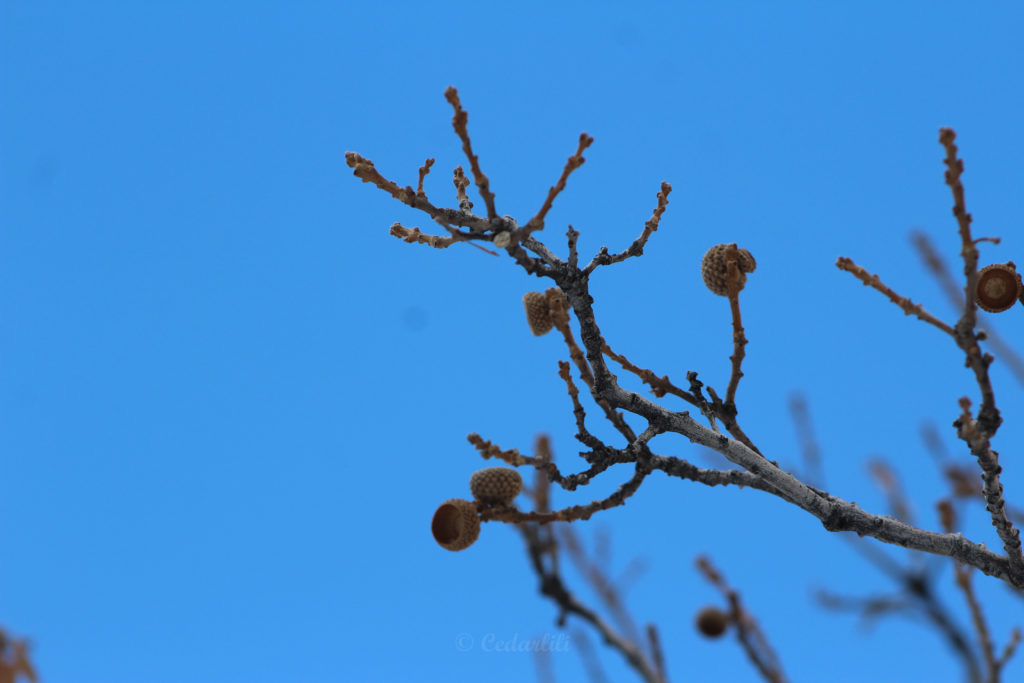
Acorn Cups remaining after the nuts fell, these were my first clue to what I could find here.
Even in winter, you can easily identify many trees if you take the time to learn not only what the leaves look like - although the dead leaves I observed on this hike where I wasn't necessarily up close to the trees were my best clues - but also the twigs, buds, bark, and overall shape of the tree species you want to be able to spot. I practice by making a game of 'how many species can I see going down the highway?' and you really can pick out dozens of species even while driving along at interstate speeds. Maples are another tree commonly found in many places, and it's not just useful for maple syrup (in fact, many species wouldn't be useful for this at all) but again, the nuts. More properly to give them their pretty name, the samaras. Each of those little helicopter wings contains a seed, somewhat pea-like, that can be eaten fresh (although it may be bitter) or toasted, or cooked. Like most seeds and nuts, they are full of nutrition as they are packed for growing a whole tree.
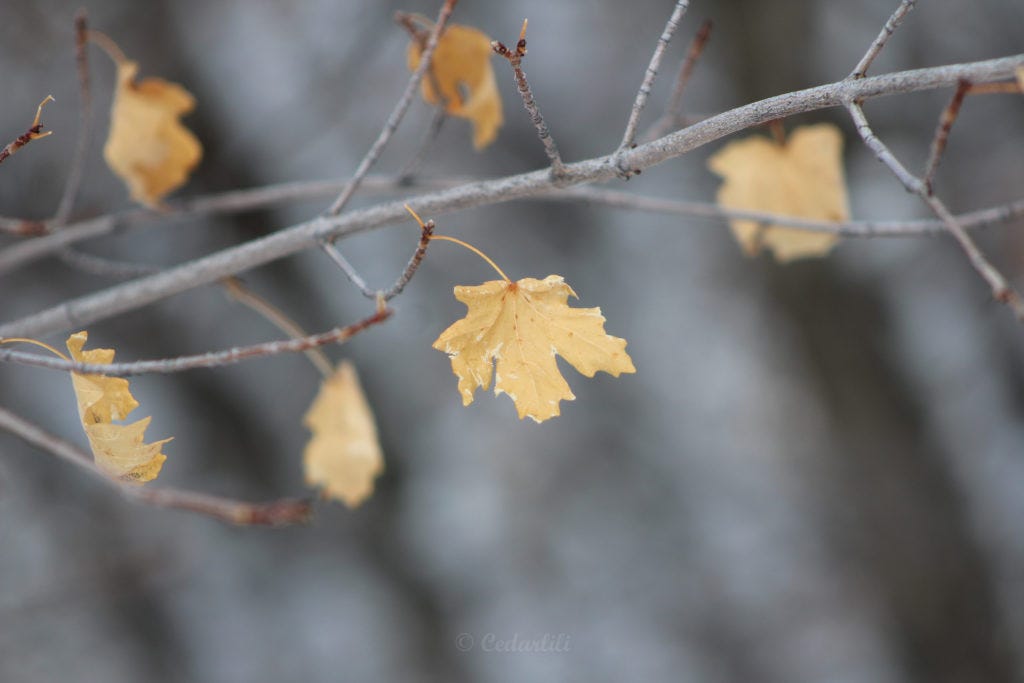
That looks to me like the familiar Sugar Maple (Acer saccharum) leaf shape, sometimes called palmate for the resemblance to a hand.
Finally, my favorite of the wild edibles I spotted on this little hike, the wild rose. Roses are not only pretty, they are quite edible. You can eat the young leaves (they don't taste like much), you can eat the flowers - I used to sprinkle them on salads along with violets and dandelion petals for pretty. And you can eat the berries, called rose hips. But be aware that the hips are full of sharp little hairs! There's not a lot of flesh outside that hair-lined seed cavity (unless you are lucky enough to have rosa rugosa, the big-hipped beach roses) so the best way to enjoy these is in tea. Rose hips are very high in vitamin C, so if you really were in a bad situation, they could stave off scurvy during the winter while you waited on green things to grow again.
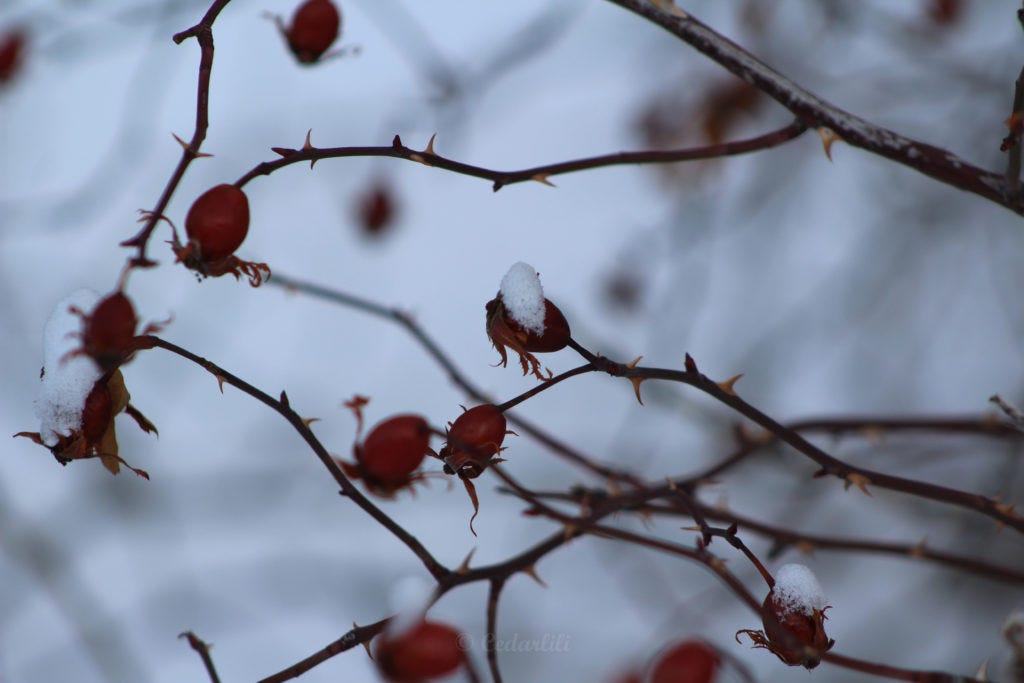
Little rose hips make a fantastic tea, and jelly.
I'll finish up my hike list with a brief mention of sagebrush, which if I were going to use would be sparingly, and probably more as seasoning than substantive food. And Juniper, which would be the same. Juniper berries are edible, but strongly resinous in taste. They are used to season pastrami, and gin, which may give you a hint as to their flavor, and possible uses.
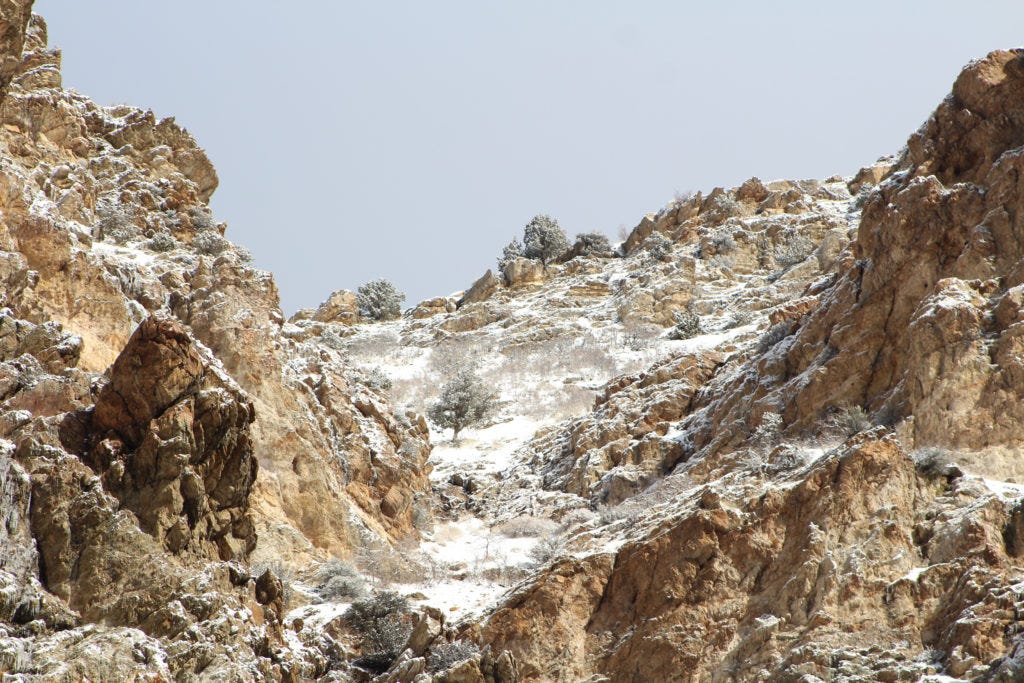
Juniper trees high on the saddle above me.
So before you go out this spring and practice, spend some time figuring out what grows near you that can be eaten - or shouldn't! Being able to identify poisonous plants is important, too. I highly recommend finding field guides specific to your region. You will find a lot of plants can be found almost universally - maples! and dandelions, and many weeds - but some won't, and you also want to know before you potentially forage a plant that has been overharvested and should be left alone. Train your eyes, and soon you'll be spotting interesting plants all around you. Next week: Early Spring Greens (because hopefully the snow will be going away this weekend in Ohio at least).




